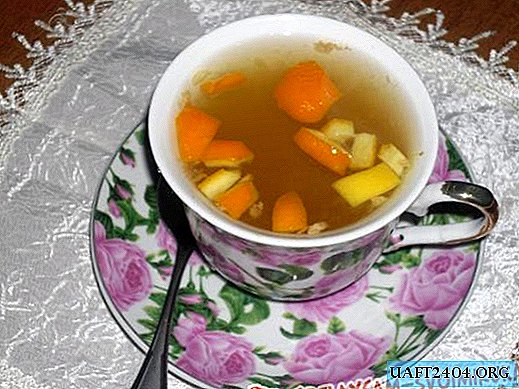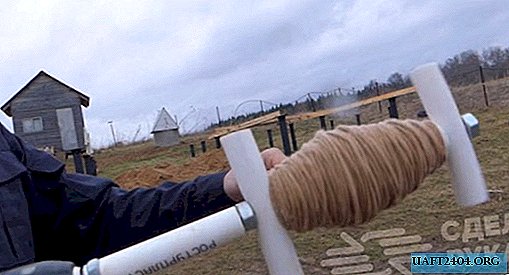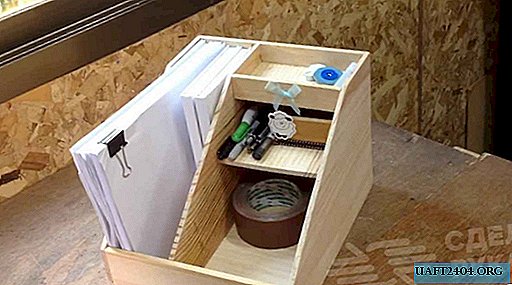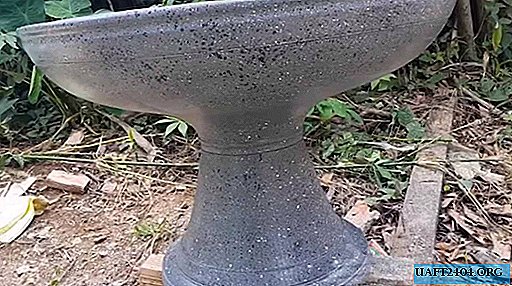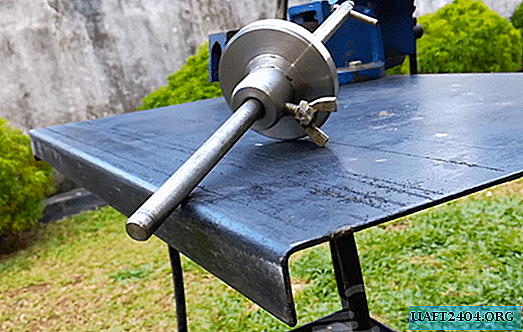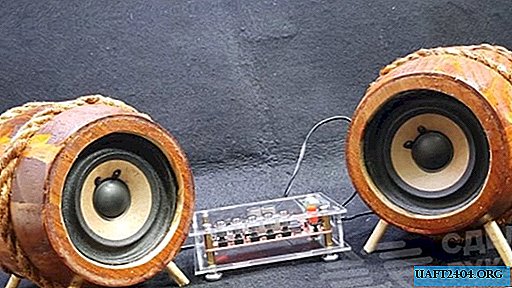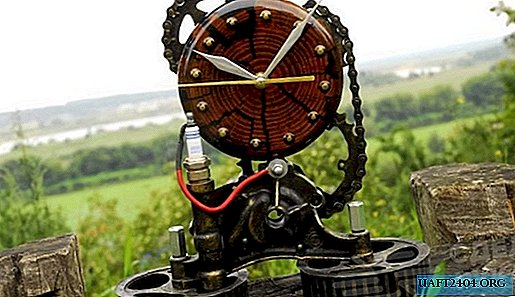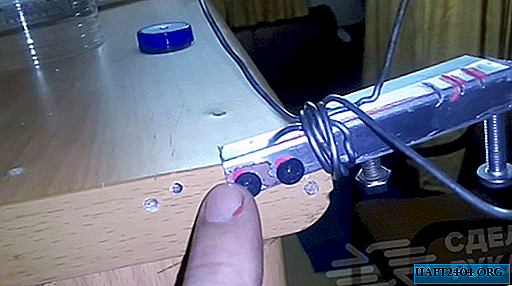Share
Pin
Tweet
Send
Share
Send
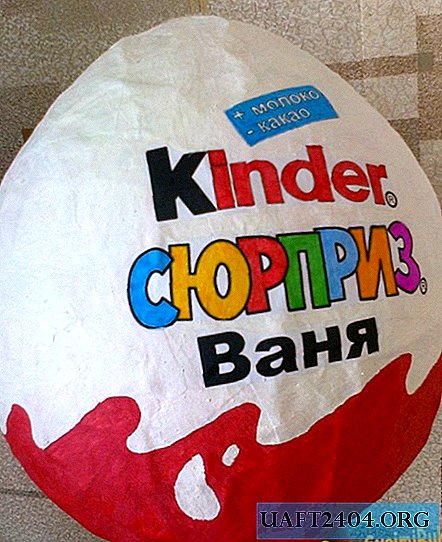
And if such a "Kinder" is not the standard sizes that are on the shelves in stores, but much more? There will be no limit to the delight of the child. In addition, you can put anything you want inside: your favorite toys, lots of different sweets. This is a great option for a holiday gift.
You can make such a surprise with your own hands. This is not difficult at all, especially if you know all the secrets and subtleties. The egg is made of paper using the papier-mâché technique, or rather, machining. In addition, you can make this gift personalized, which will be doubly pleasant.
Necessary materials
In the process of work you will need:
- - balloon;
- - paper;
- - scissors;
- - paints;
- - printed labels (color or black and white);
- - brush;
- - water;
- - PVA glue.

Work stages
So, we proceed to the manufacture of "Kinder Surprise." It should be borne in mind that this work, although simple and affordable even for beginners who have never worked with papier-mâché, but it will take a lot of time. About 4-5 days. Since it will be necessary to dry all layers of paper well so that the testicle does not deform later. Therefore, you need to start not on the eve of the celebration, but a little earlier. We will do Kinder in this order.
1. Inflate the ball. Tie tightly with a thread. We leave the thread more authentic, do not cut it short. We still need it.
2. Cut out the inscription "Kinder Surprise", each word separately. If you have a color printer, you can immediately print the letters in color. If not, take black and white and paint it yourself. You can also print the name of the child or someone to whom you will make a gift. It is also carefully cut out.

3. Cut the paper into small squares. Approximately 2x2 cm.

Tip: In the process, I realized that it’s better to tear the paper with my hands. So the edges are thinner and then the joints are not so noticeable.
4. Glue the first layer of paper to the ball using plain water. Prepared pieces of the sheet put in a bowl of water. Apply one piece of paper to the ball with a slight overlap. For convenience, you can put the ball in a mug or jar "tail" down. We completely cover the entire ball with paper, leaving only its tip open. Through this hole then you will need to remove the ball.

5. Until the paper has dried, immediately proceed to the application of the second layer. Here you will already need PVA glue. It will permeate the paper well and it will become an excellent solid foundation for Kinder. Grease the prepared pieces of the sheet with PVA and apply the same overlap. You can use a brush, but it’s easier to do it with your hands. It is necessary to try to smooth out the formed folds as much as possible.

6. Leave the workpiece to dry by hanging it by the thread that tied the ball. It should dry completely. It will take a night, and maybe even a day. During drying, PVA deforms a little, but this is not critical.

7. When the first layer is dry, proceed to applying the second. To reduce the cost and simplify the process, you can use not only A4 sheets, but also any other paper: toilet paper, napkins, paper towels. The inner layers will not be visible, and with the help of soft material it will be possible to correct the formed irregularities, and it’s more convenient to work with it.
Tip: it is better not to use newspapers and printed matter. The paint will get wet and then it will appear through the upper layers. And that can ruin all the work.
PVA glue is now better replaced with flour paste. It is much easier and more convenient to work with it. He does not stick to his hands, but glues perfectly. You need to take the paper, generously coat it with paste with your hands, apply overlap and flatten everything on top.
Pasta Recipe:
- - 2 tablespoons of flour,
- - 200 ml of water.
Gradually add water to the flour, mixing it thoroughly so that there are no lumps. Put on low heat and cook, stirring constantly, until thickened. The paste should not boil.
Flour paste can be stored in the refrigerator. It does not lose its adhesive properties for 3 days. But it's easier to cook fresh every time. This is a matter of five minutes.
8. Again, hang the egg to dry. When the third coat is dry, apply the fourth coat in the same way and dry again. It’s best to make at least 4-5 layers so that “Kinder” ultimately holds its shape and does not bend under the weight of gifts inside it. The last layer should be white paper.
9. When the last layer of papier-mâché is completely dry, remove the ball. Just hold it by the “tail” and cut it with scissors. It is blown off and easily detached from the paper.

10. Seal the hole remaining on top. To do this, cut out two oblong strips of white paper and a few squares. First, glue the strips crosswise with PVA glue, forming the top of the egg. When they dry, tightly, in several layers, close the hole with squares of paper. Leave to dry.


11. The turn has come to decorate the workpiece. We draw inscriptions. This can be done with paints, felt-tip pens or pencils.
12. Make a markup on the egg with a simple pencil. Carefully glue inscriptions with glue, smoothing irregularities.
13. Colorize Kinder. The bottom is red and the top is white. The top must be painted. So it will be smoother and brighter. White paint can be mixed with PVA glue. Gouache is more suitable for work, but if it is not, then you can take watercolor.




14. When the paint dries, cut a hole in the back in the form of a window through which the egg will be filled. This can be done with a blade or a clerical knife.


Tip: You can fill the surprise through the hole at the top, which remains after removing the ball. But it needs to be cut, as large sweets and toys still will not crawl through. Then stick it all neatly and quietly is unlikely to succeed. And while painting all the contents will hang out inside, which is not very convenient. And the hole cut through the back can be opened and closed at any time. It looks normal, and it’s easier for the child to get the contents later (you don’t need to tear Kinder apart, but you can play it later).

All. Kinder Surprise is ready. This is how simple it is to surprise a child or an adult. Fulfill a dream or just have a fun holiday filled with love.
Share
Pin
Tweet
Send
Share
Send

